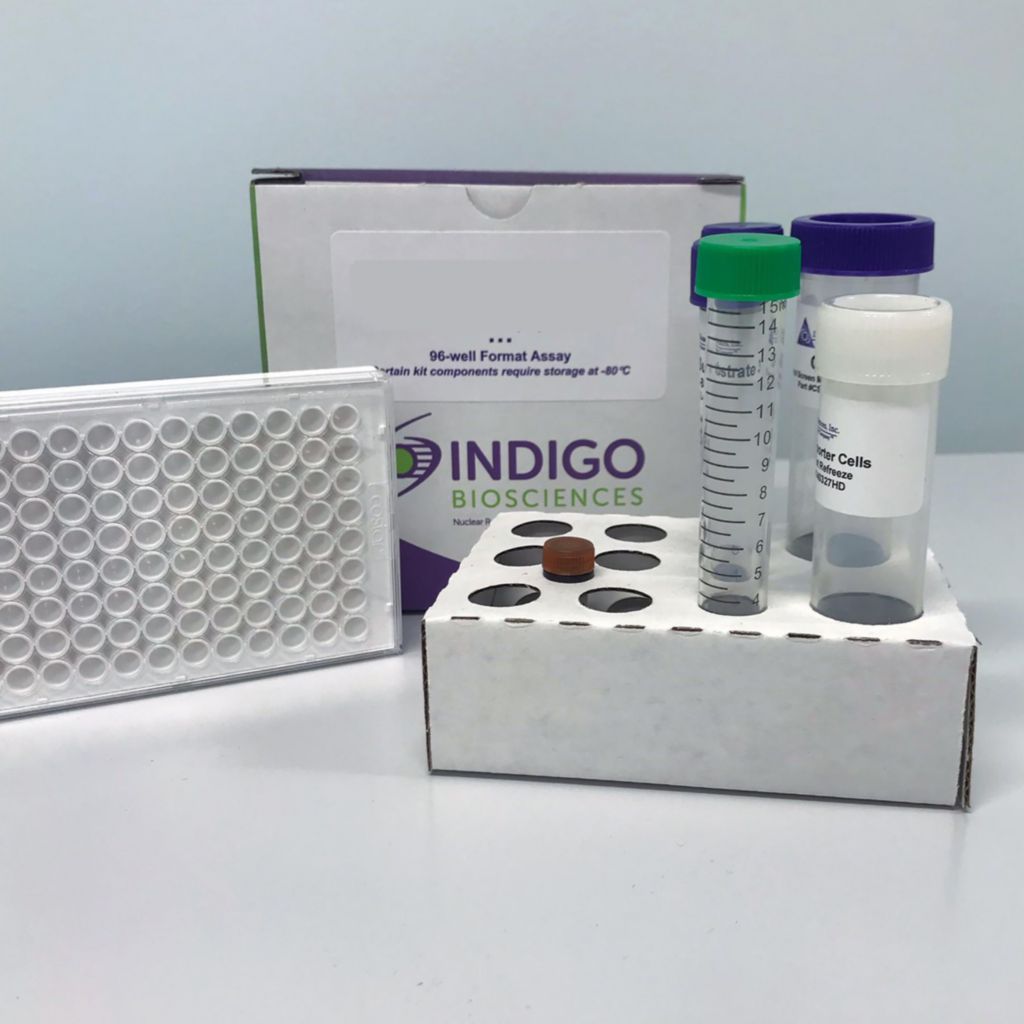Product Description and Product Data
The primary application of INDIGO Biosciences MDR1 drug interaction assay kit is to rapidly assess drug candidates as either inhibitors, substrates, or non-substrates of P-glycoprotein. This is accomplished by co-treating the cells with varying concentrations of the test drug and a fixed concentration of daunorubicin, a well-characterized fluorescent substrate for P-glycoprotein mediated transport. HCT-Pgp cells are a proprietary cell line that have been extensively selected for high-level expression of native P-glycoprotein.
The kit contains two aliquots of HCT-Pgp cells and two black, sterile, collagen-coated 96-well assay plates. In addition to HCT-Pgp cells and assay plates, this kit includes Cell Recovery Medium (CRM-p) used to perform a rapid thaw of the -80°C HCT-Pgp cells, Compound Screening Medium supplemented with daunorubicin (CSM+DR) used to prepare drug treatment media, Wash Buffer, two aliquots of Lysis Reagent, and the potent reference inhibitor Tariquidar.
Features
Clear, Reproducible Results
- All-Inclusive Assay Systems
- Exceptional Cell Viability Post-Thaw
- Consistent Results Lot to Lot
Product Specifications
| Species | Human | ||
| Receptor Form | Hybrid | ||
| Assay Mode | Gene Expression | ||
| Kit Components |
| ||
| Shelf Life | 6 months | ||
| Orthologs Available | No | ||
| Shipping Requirements | Dry Ice | ||
| Storage temperature | -80C |
Data
Target Background
Human P-glycoprotein (P-gp) is also known as MDR1 or ABCB1, the human multidrug resistance protein 1. It is a 170kDa transmembrane glycoprotein that functions as an ATP-dependent efflux transporter present in the human body’s epithelial tissues.
P-gp is comprised of twelve membrane-spanning domains and two cytosolic nucleotide-binding domains. The transmembrane domains comprise several substrate binding pockets capable of interacting with a broad range of both endogenous and foreign small molecule chemotypes. Xenobiotic substrates of P-gp range from pollutants, such as those encountered through unintended exposure to industrial and agricultural chemicals, to small molecule drugs that are intentionally administered for therapeutic benefit.
P-gp is highly expressed in gastrointestinal epithelium, liver, pancreatic and kidney cells, and capillary endothelial cells that establish the blood-brain barrier. Multidrug resistance research has found MDR1 expressed at high levels on the lines of transformed and tumor cells. In combination with the activities of Cytochrome P450 oxidases, the robust efflux activity of P-gp plays a critical role in limiting the absorption and systemic physiological distribution of xenobiotics and facilitating their ultimate elimination from the body. The MDR1 transporter role is important for drug-drug interaction (DDI) and drug safety assessments.
Product Documentation
Also available as a service

